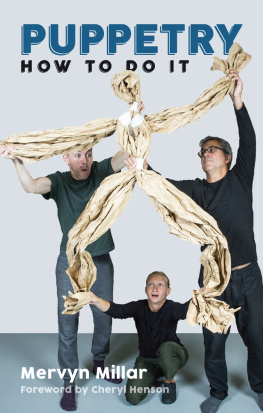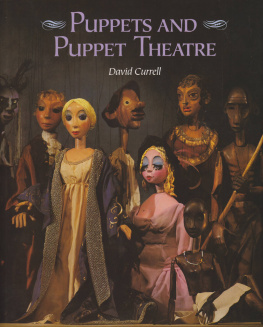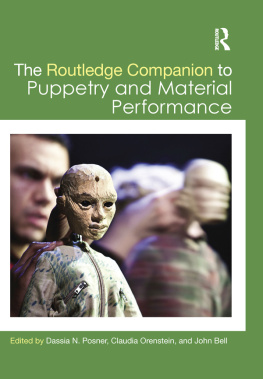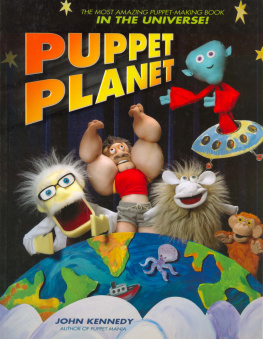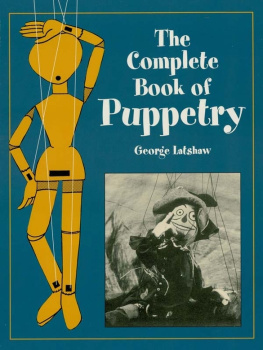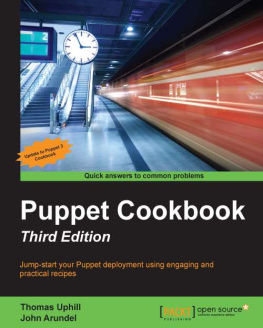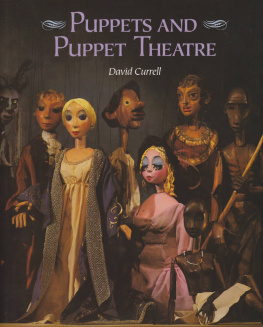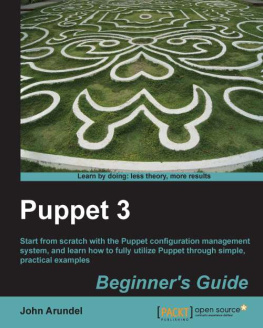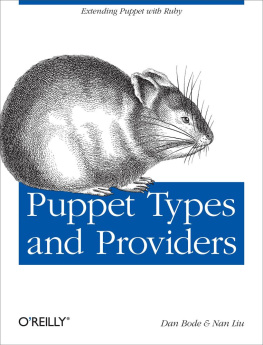Meryvn Millar - Puppetry: How to Do It
Here you can read online Meryvn Millar - Puppetry: How to Do It full text of the book (entire story) in english for free. Download pdf and epub, get meaning, cover and reviews about this ebook. year: 2018, publisher: Nick Hern Books, genre: Home and family. Description of the work, (preface) as well as reviews are available. Best literature library LitArk.com created for fans of good reading and offers a wide selection of genres:
Romance novel
Science fiction
Adventure
Detective
Science
History
Home and family
Prose
Art
Politics
Computer
Non-fiction
Religion
Business
Children
Humor
Choose a favorite category and find really read worthwhile books. Enjoy immersion in the world of imagination, feel the emotions of the characters or learn something new for yourself, make an fascinating discovery.
- Book:Puppetry: How to Do It
- Author:
- Publisher:Nick Hern Books
- Genre:
- Year:2018
- Rating:3 / 5
- Favourites:Add to favourites
- Your mark:
Puppetry: How to Do It: summary, description and annotation
We offer to read an annotation, description, summary or preface (depends on what the author of the book "Puppetry: How to Do It" wrote himself). If you haven't found the necessary information about the book — write in the comments, we will try to find it.
A practical, accessible and inspiring guide to using puppetry in theatre the perfect entry point for anyone looking to use puppets in their productions, to explore what puppets can do, or to develop their puppetry skills.
Written by an experienced theatre and puppetry director, Mervyn Millars Puppetry: How to Do It focuses on the performer and the craft of bringing any puppet to life. No puppet-making is required to use this book: starting just with simple objects, it lays out the skills required to unlock a puppets limitless potential for expression and connection with an audience.
Inside youll discover fifty practical, easy-to-follow exercises for use in a group or on your own to develop elements of the craft, build confidence and help you improve your puppetry through play and improvisation. Also included are sections on different types of puppet, thinking about how the puppeteer is presented on stage and how to direct and devise puppet performances.
Ideal for actors and performers, for directors and designers, and for teachers and students of all ages and levels of experience, this book will demystify the art of puppetry, and help you become more confident and creative with all kinds of puppets and objects on stage.
This is a superb guide to puppet manipulation by one of the worlds most experienced puppetry directors and teachers at a time when many actors are seeing puppetry as the twenty-first centurys evocative and powerful new performance medium - Basil Jones, Handspring Puppet Company
This book captures Mervyns playful and accessible process for working with actors to develop their puppetry skills its like having him in the room - Lucy Skilbeck, Director of Actor Training at RADA
Mervyn Millar has a unique perspective on the meteoric rise of puppetry in British theatre having witnessed it from the inside. He was resident at the Puppet Centre Trust at BAC when Improbable Theatre were exploding theatrical form in 70 Hill Lane and Animo. He was studying with Handspring when they created the exquisite and game-changing giraffe puppet in Tall Horse. He was present from the earliest experiments at the National Theatre Studio in which puppetry and poor theatre were combined to create the performance language of War Horse. There is no one better placed to reveal the techniques of puppetry which made these changes and these shows possible. - Tom Morris, Artistic Director of Bristol Old Vic, and Co-director of War Horse
Based on the workshops he developed for training performers for War Horse, Mervyn has written this book to share his craft... the exercises are clear and easily reproducible for many different types of participants... a wonderful gift to the field of puppetry. I hope that it will be used widely to introduce adventurous spirits to this dynamic art form - Cheryl Henson, President of the Jim Henson Foundation, from her Foreword
Meryvn Millar: author's other books
Who wrote Puppetry: How to Do It? Find out the surname, the name of the author of the book and a list of all author's works by series.

